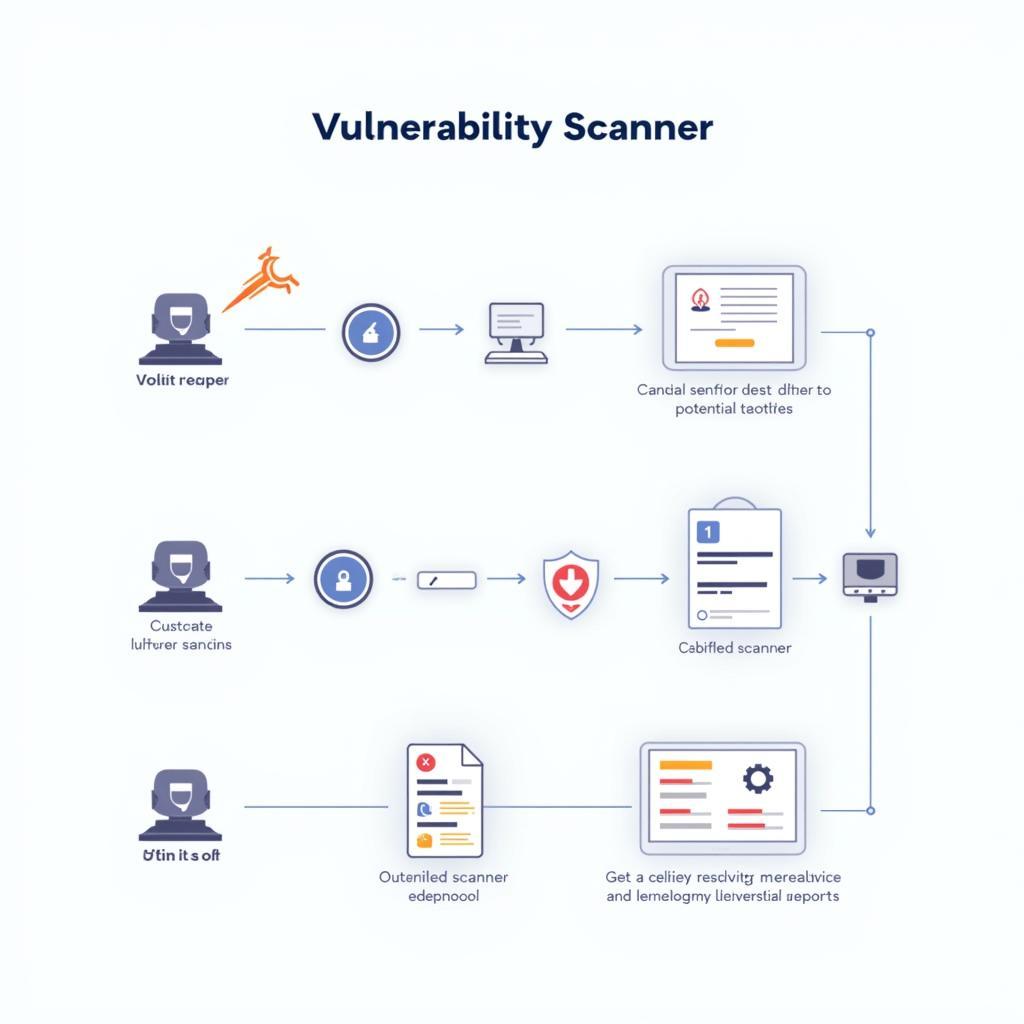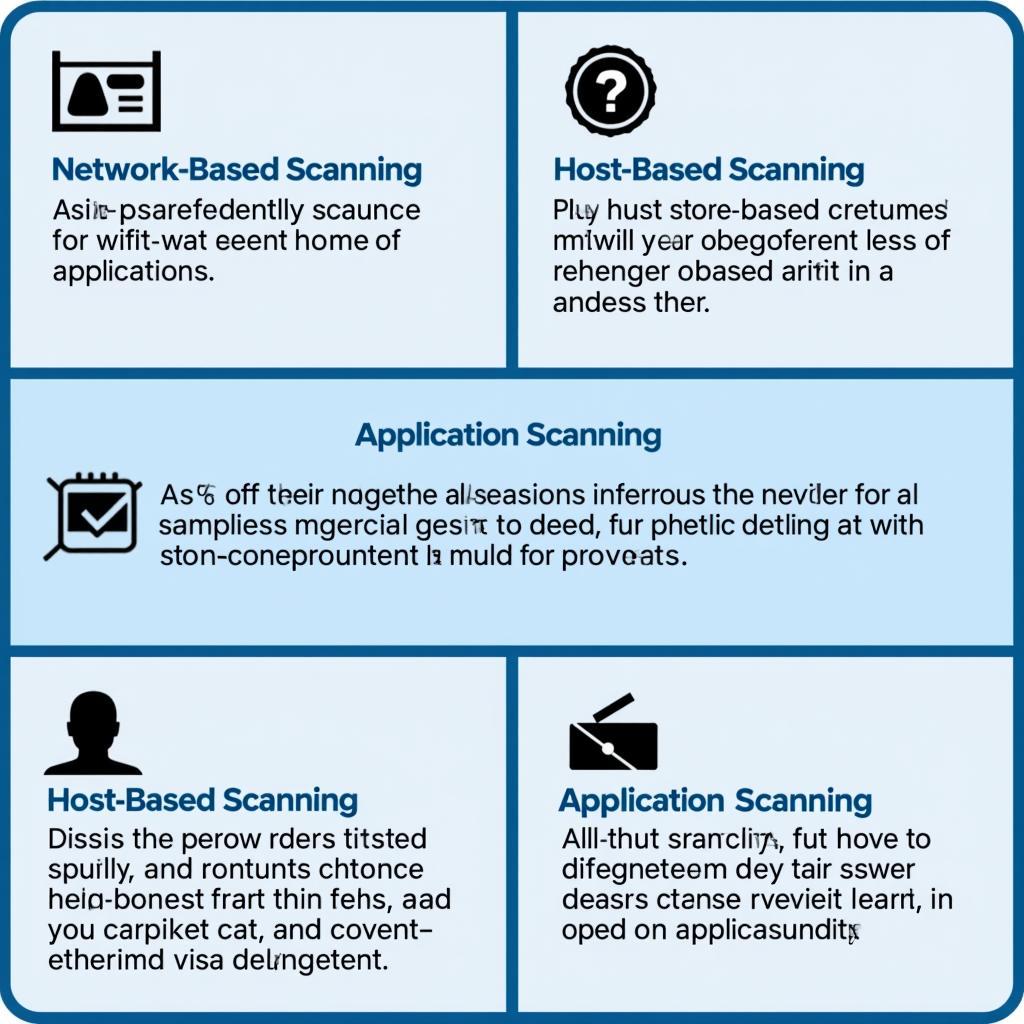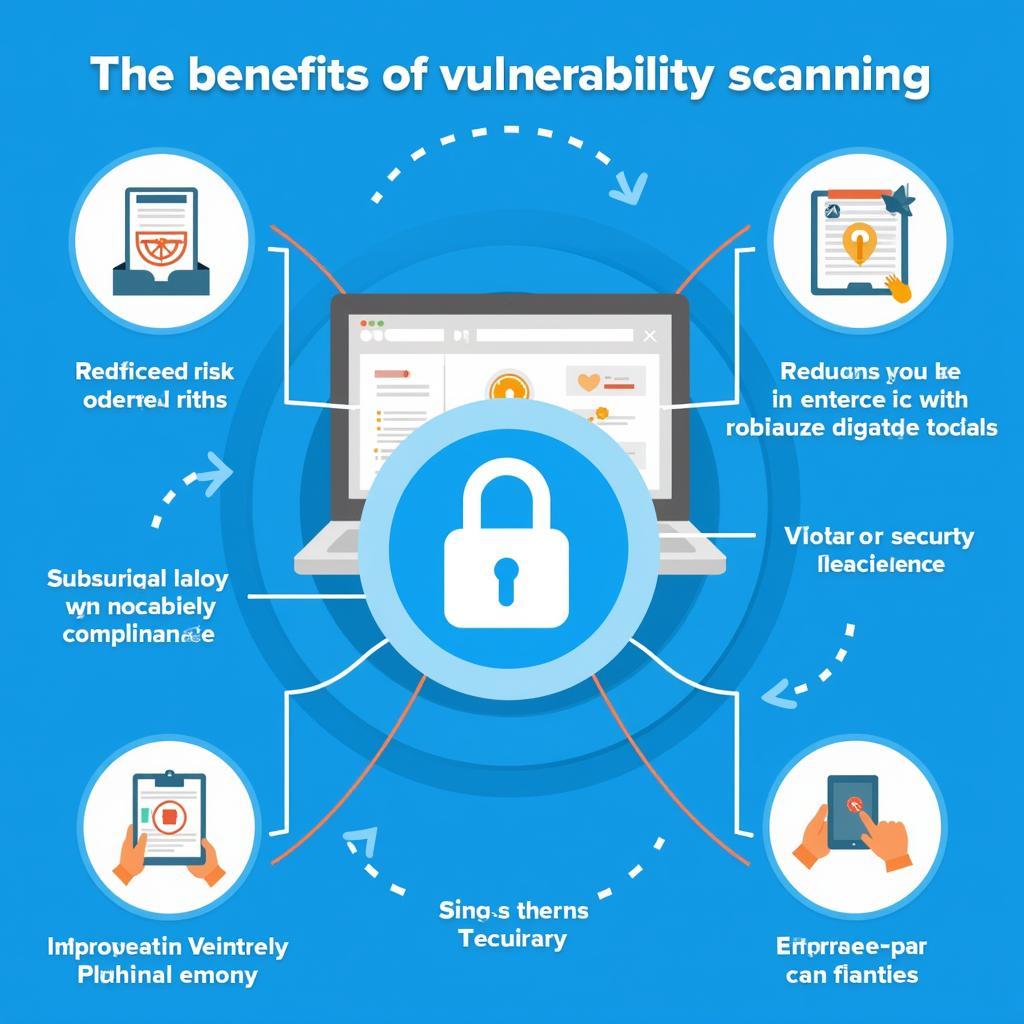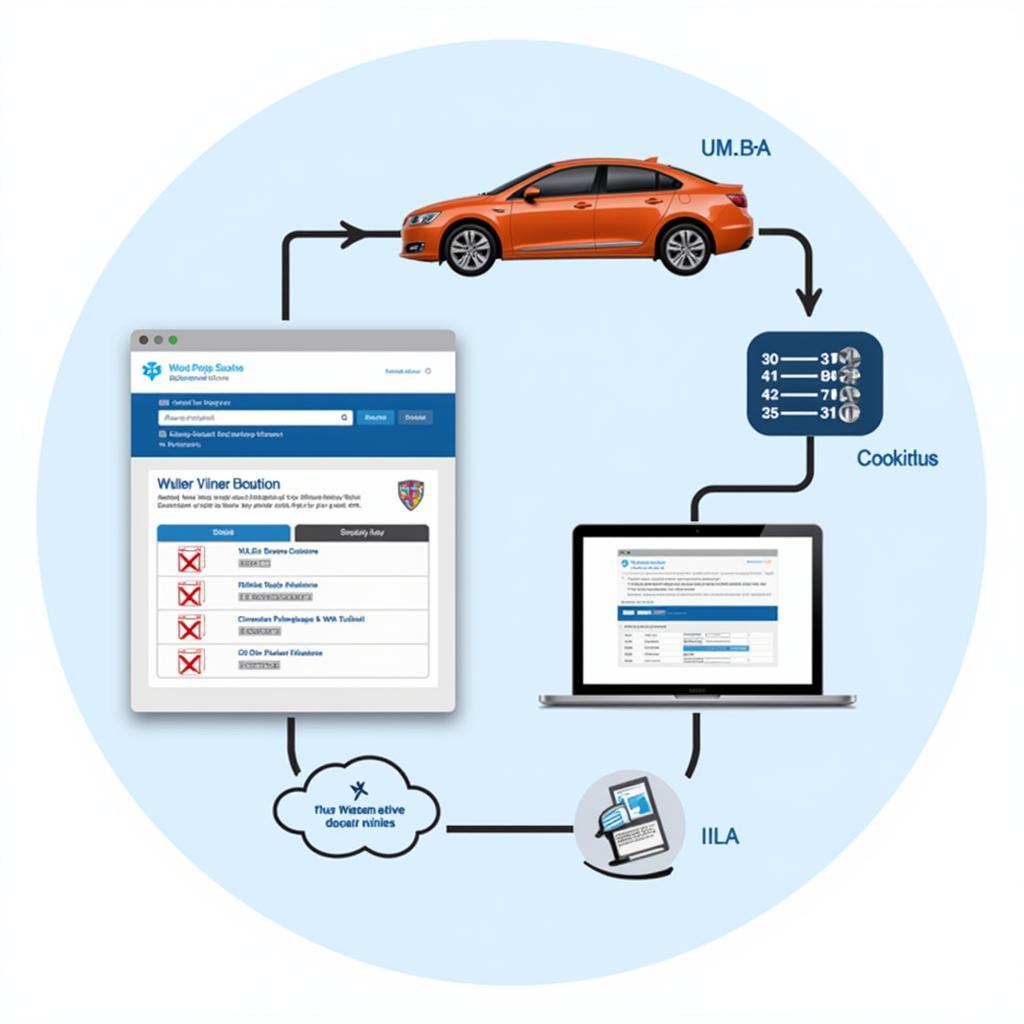A vulnerability scanning tool is a piece of software that automatically scans your computer systems, networks, and applications for security weaknesses known as vulnerabilities. These tools are essential for maintaining a robust security posture in today’s increasingly complex digital landscape. Think of it as a digital security guard that tirelessly patrols your systems, identifying potential entry points for attackers and alerting you to any weaknesses.
 Vulnerability Scanning Process
Vulnerability Scanning Process
Understanding the Importance of Vulnerability Scanning Tools
Vulnerabilities can exist in various forms, such as outdated software, misconfigured settings, or even flaws in the code itself. Exploiting these weaknesses allows attackers to gain unauthorized access to your sensitive data, disrupt operations, or even take complete control of your systems. This is where vulnerability scanning tools come into play. They act as your first line of defense, proactively identifying and helping you remediate vulnerabilities before attackers can exploit them.
 Types of Vulnerability Scanning
Types of Vulnerability Scanning
How Vulnerability Scanning Tools Work
Vulnerability scanning tools employ a variety of techniques to identify weaknesses in your systems, including:
- Network Scanning: These tools scan your network for active devices and open ports, identifying potential entry points for attackers.
- Host-Based Scanning: This type of scan focuses on individual systems, checking for vulnerabilities in operating systems, applications, and configurations.
- Application Scanning: These tools specifically target web applications, looking for common vulnerabilities like SQL injection, cross-site scripting (XSS), and insecure authentication mechanisms.
Once a vulnerability is detected, the tool generates a report detailing the severity of the weakness, its potential impact, and recommendations for remediation. This information allows you to prioritize and address the most critical vulnerabilities first, minimizing your overall risk.
Choosing the Right Vulnerability Scanning Tool
Selecting the right vulnerability scanning tool is crucial for effective security. Consider the following factors when making your decision:
- Scope of Coverage: Ensure the tool covers all your assets, including networks, systems, and applications.
- Accuracy and Reliability: Look for tools known for their low false-positive rates and accurate vulnerability detection.
- Reporting and Analysis: Comprehensive and easy-to-understand reports are crucial for efficient remediation.
- Ease of Use: Choose a tool that aligns with your team’s technical expertise and resources.
For instance, if you’re managing a web server, a web server version scan tool becomes indispensable for identifying and mitigating potential risks associated with outdated server software.
Benefits of Using Vulnerability Scanning Tools
The benefits of incorporating vulnerability scanning tools into your security strategy are numerous:
- Proactive Security: By identifying vulnerabilities early on, you can take steps to prevent attacks before they occur.
- Reduced Risk: Remediating vulnerabilities significantly reduces the likelihood of successful attacks and data breaches.
- Improved Compliance: Many regulations and industry standards require regular vulnerability scanning.
- Enhanced Security Awareness: Regular scanning helps raise security awareness among your IT staff and developers.
“Regular vulnerability scanning is like getting regular checkups for your IT infrastructure,” says John Smith, a cybersecurity expert at SecureTech Solutions. “It helps you stay ahead of potential threats and keep your systems healthy.”
 Benefits of Vulnerability Scanning
Benefits of Vulnerability Scanning
Best Practices for Effective Vulnerability Scanning
To maximize the effectiveness of your vulnerability scanning efforts, consider these best practices:
- Establish a Regular Scanning Schedule: Scan your systems regularly, ideally weekly or monthly, depending on your risk tolerance and the sensitivity of your data.
- Prioritize Remediation: Focus on addressing critical vulnerabilities first, based on their severity and potential impact.
- Automate the Scanning Process: Automate your vulnerability scans to ensure consistency and reduce the burden on your IT staff.
- Stay Informed: Keep your vulnerability scanning tools and security practices up-to-date to address emerging threats.
Tools like the Nessus vulnerability scanning tool have become industry standards, offering comprehensive vulnerability assessments and actionable insights for robust security.
Conclusion
Vulnerability scanning tools are essential components of a comprehensive cybersecurity strategy. They help organizations identify and remediate security weaknesses before they can be exploited by attackers, reducing the risk of data breaches and other security incidents. By understanding the importance of vulnerability scanning, choosing the right tools, and implementing best practices, organizations can significantly strengthen their security posture and protect their valuable assets.
Need help choosing the right vulnerability scanning solution for your business? Contact ScanToolUS at +1 (641) 206-8880 or visit our office at 1615 S Laramie Ave, Cicero, IL 60804, USA. Our team of experts can help you assess your needs and recommend the best tools to meet your specific requirements.



